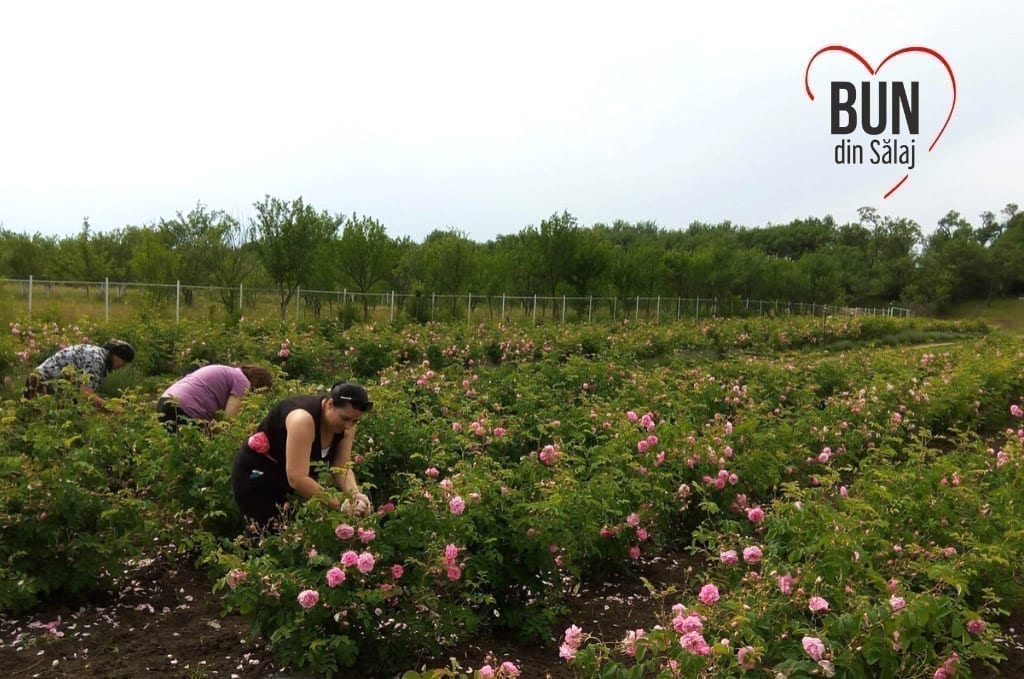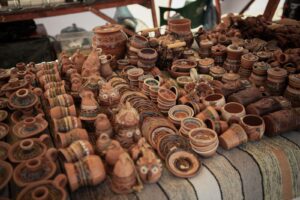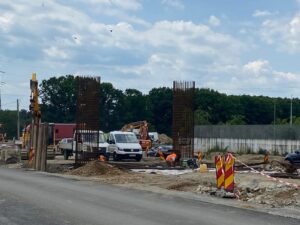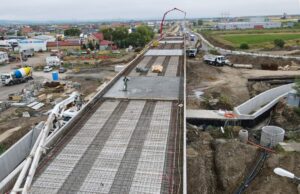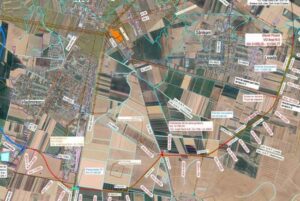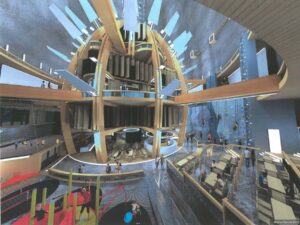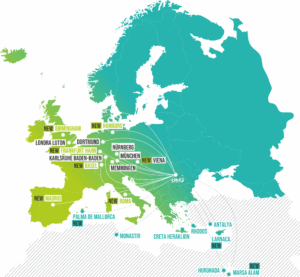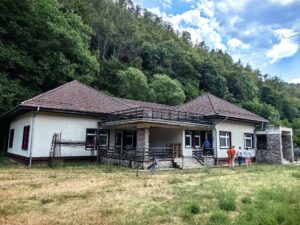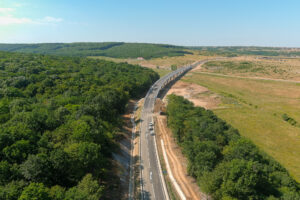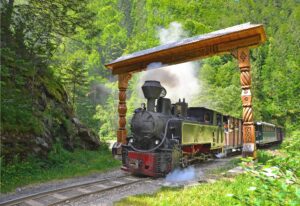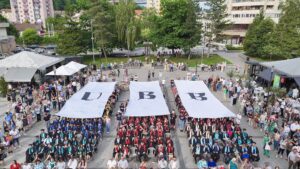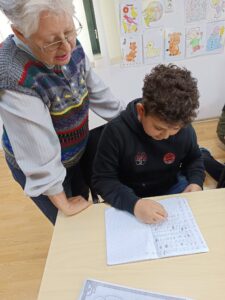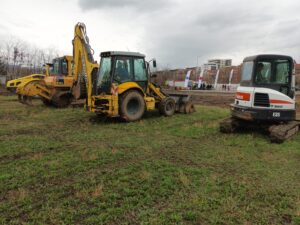The noble castles in Mureş County are part of the cultural heritage of Transylvania, Romania and the world, and represent historical proofs of a period with a propensity towards refinement and beauty, coupled with a marked interest in education and the dissemination of the written word. With its chain of noble castles – 26 in all in the county, illustrating various architectural stages “in vogue” in Transylvania, the Mureş Valley could rival the much more publicized and visited Loire Valley in France. Architectural jewels in the Baroque, Renaissance, Rococo, or Secession styles, adapted to the local spirituality, culture and traditions, the noble castles of Mureş County, a precious heritage, could feature at all times in Romania’s tourism offer.
Nobiliary exquisiteness in the Baroque Toldalagi Palace
Outstanding, exquisite, impressive. These are just some of the epithets associated, in time, with Toldalagi Palace, erected on the former Poklos Street – today Rose Square, near the Franciscan Monastery. Considered the first noble palace in Târgu Mureş, of Baroque – Rococo inspiration, it was built in several stages between 1759 and 1772, at the request of Count Toldalagi László, the assessor (magistrate assistant) of the Royal Table (the supreme judicial authority Transylvania).


The building plan is currently square-shaped, having initially been, like other buildings erected in the 18th century, U-shaped. The palace architecture integrated an older building, located at the western end of the northern wing. The designing engineer relied on a gambrel roof, with tiles decorated with balls and two dormers with oval stone frames, adorned with stucco. The gable cornice and the dormer stone frames support busts of men, Turkish soldiers, with their heads wrapped in turbans. These statues are placed on small trapezoidal pedestals. The inner courtyard is enclosed on three sides by gazebos with arcades and parapets decorated with stone balusters. The main façade, incorporating six profusely decorated cavity axes, is the most valuable artistic detail of the building. The gate frame, marked by a deep indentation, occupies two axes on the center of the façade. On the pediment are carved in relief the Toldalagi and Wass families’ coats of arms, and above them there is a crown symbolizing the union of the two noble branches.
The façade of the first floor, with six windows having flared top corners, fitted with accentuated sills and sashes, as well as with ornamental panels in strong relief, is divided by composite pilasters. A fringe-like decoration is hanging on both sides of the frames. The gate arcade is covered with three Bohemian caps, as is the secondary access way to the building. The vault arches of the main gate are decorated with stucco. Access to the open gallery on the first floor, featuring arcades supported by brick pillars, is done via the staircase climbing from the ground floor.
Architecturally speaking, the great reception hall, which stretched the entire length of the façade, overlooking the square, abided by the same rules. The ceilings of the chambers in the south-western corner of the palace were decorated with the coats of arms of Toldalagi László and Wass Kata. The one in the north-western corner was modeled out of stucco, featuring very rich ornaments.
Currently, here are the headquarters of the Ethnographic Department of the Mureş County Museum.
Bornemisza Castle from Gurghiu
Built at the foot of Castle Hill, Castle Rákóczi – Bornemisza links its history to the name of George Rákóczi I, Prince of Transylvania, from the first half of the 16th century. Fond of hunting, he often went to Gurghiu Mountains to hunt. That must have triggered his need to build a manor there, in order to have accommodation in the forests of Gurghiu Valley for a longer time. Construction works started in 1642, under the direction of the architect Sárdi Imre. The successive inventories of the domain from the late 17th century record that the ground and first floor had stone frames, as did the cornices and the stoves’ feet. For decades, the castle remained almost uninhabited, until in 1717, when it came into the possession of Baron Bornemisza János’s family, for a period of 99 years, for the amount of HUF 25,000, which they lent to the Transylvanian revenue authority.

The new owners of the domain renovated part of the building and in 1730 they raised a chapel with an oval-shaped ground plan, a type rarely seen in Transylvania. The chapel was decorated with frescoes. The descendants of Bornemisza János received assurances from Queen Maria Theresia that the revenue authority did not intend to redeem the estate before 99 years had passed. With this promise, the Bornemisza family invested in the estate it administered: they rebuilt the paper mill, established a glass factory and a porcelain manufactory, and erected new buildings around the castle. The present-day building of the gate, the residence of the court priest and of the soldiers from that time, dates back to that period.
In 1848, during the Revolution, the castle underwent its first great ordeal. The castle was besieged by serfs, the furniture and the assets being destroyed. After the defeat of the Revolution, in 1849, the family restored the buildings, being constrained by the fact that the estate had to be returned and the state had filed a suit against them. In 1869, the two parties reached an agreement, the Bornemisza family pledging that it would return the estate by the end of 1870. After this year, the castle and the buildings passed through the hands of tenants, and then, after a vast renovation, it served as a hunting castle to Prince Rudolf of Austria, heir to the crown of Austria, Hungary and Bohemia. After the dramatic event from Mayerling (near Vienna), where the crown prince allegedly committed suicide in the hunting lodge, in 1893 the castle received the destination of a forestry school, which still functioned there until recently. This is one of the explanations why the arboretum here is so well cared for and naturally supports the beauty of the Bornemisza medieval castle. The transition, in the 19th century, from a flower or vegetable garden and an orchard to a park of English inspiration – still present today – is owed to Bornemisza Leopold.
In 2009, the County Council took it into custody after the Forest College was moved elsewhere and developed, through its subordinate institution – the County Museum – a building rehabilitation project, which initially aims to halt the degradation of the building and then to restore it.
Ugron Castle or the Calendar of Love
Ugron Castle or the calendar castle, as it is known, towers on one of the hills in the commune Zau de Câmpie and recently turned one century old. The splendid building, located in Bârsana Forest, was erected on the domain of the Ugron family; it became the property of the estate following the marriage between Ugron István and Baroness Bánffy Anna, as her dowry. This happened in the second half of the 18th century. The estate passed successively to the family heirs, and in 1899 it belonged to Ugron István, a consul in Tbilisi, situated on the territory of the Austro-Hungarian Empire at the time. In 1908, while he was a delegate in Warsaw, Baron István Ugron decided to build a new castle on the site of the old mansion, attempting to forget, as the oral sources suggest, his unrequited love for a Russian princess, the daughter of Tsar Nicholas II. The design was entrusted to Baron Bánffy János, according to the inscription on the commemorative plaque placed on the rear facade of the castle, while the actual construction was the work of the Cluj-based architect Pákei Lajos, who merely retouched the blueprints, entrusted to him by the aristocrat Bánffy. This is one of the reasons why this castle, in the medieval French style, is unlike any other building bearing the signature of the architect from Cluj. The construction of the castle was completed in 1912, the works advancing with difficulty, and it was furnished six years later.


The beautiful castle is reminiscent of a calendar, because it has four towers, symbolizing the four seasons, 12 halls, equivalent to the number of months, 52 rooms meaning 52 weeks, 365 windows, as many as there are days in a year, and 7 terraces, i.e. the number of days a week.
In 1925, Ugron István waived his property rights over the castle in favor of his son, Bánffy János – István. Like other similar properties, in 1948, the castle was nationalized and was converted into a grain collection center, a secondary school or an agricultural vocational school. From 1963 to 2012, here functioned a foster child center, which has been closed down in the meantime. The castle is now in the administration of the Mureș County Council.
by Ligia Voro
Translator: Carmen Borbely
Photo: Alin Zaharie (Ugron Castle – Zau de Câmpie), Eliodor Moldovan
(From the special edition of TB 86 – „ENJOY TRANSYLVANIA!” – May/June 2019)









